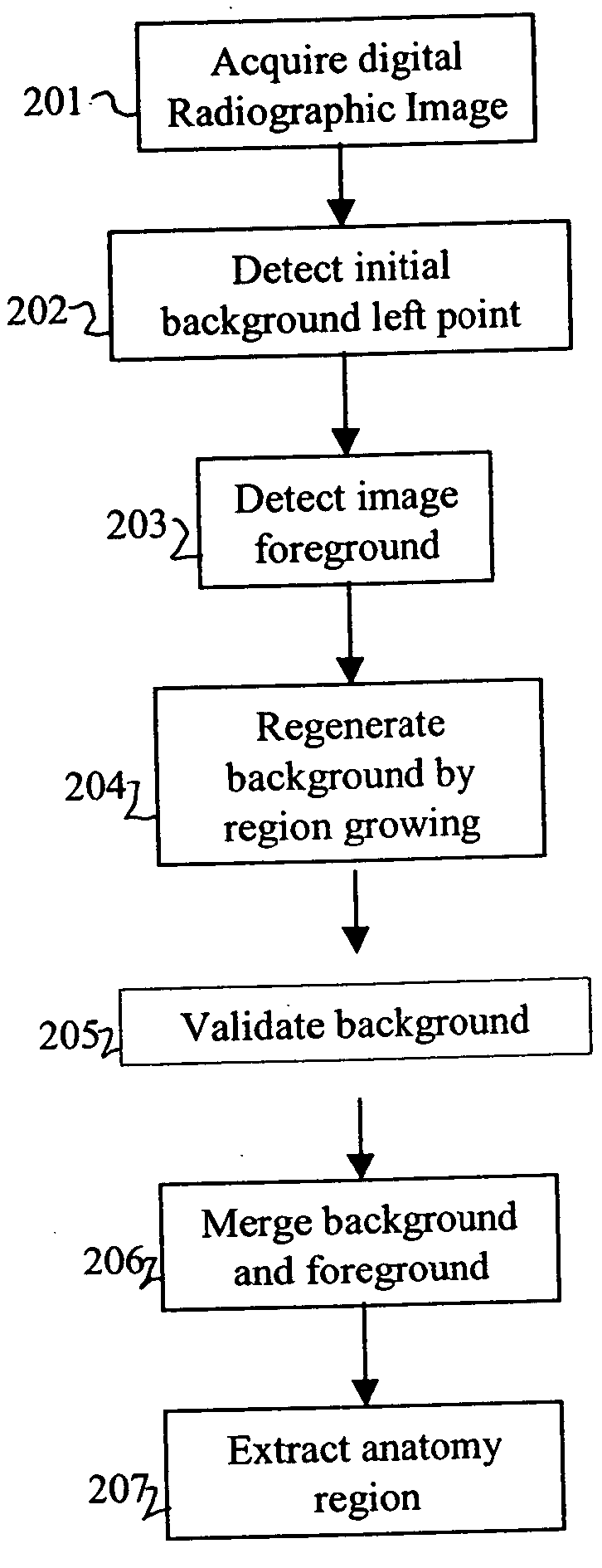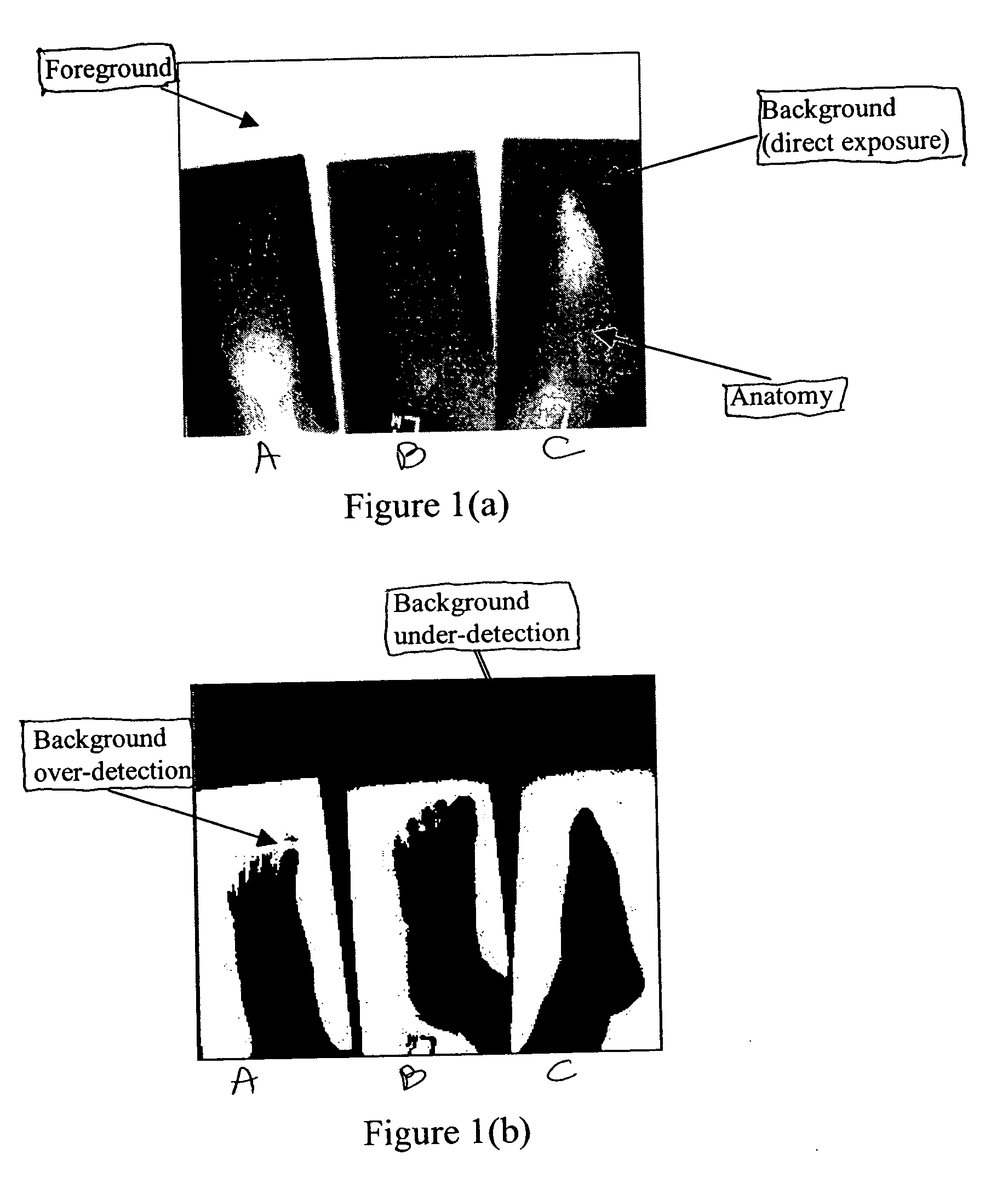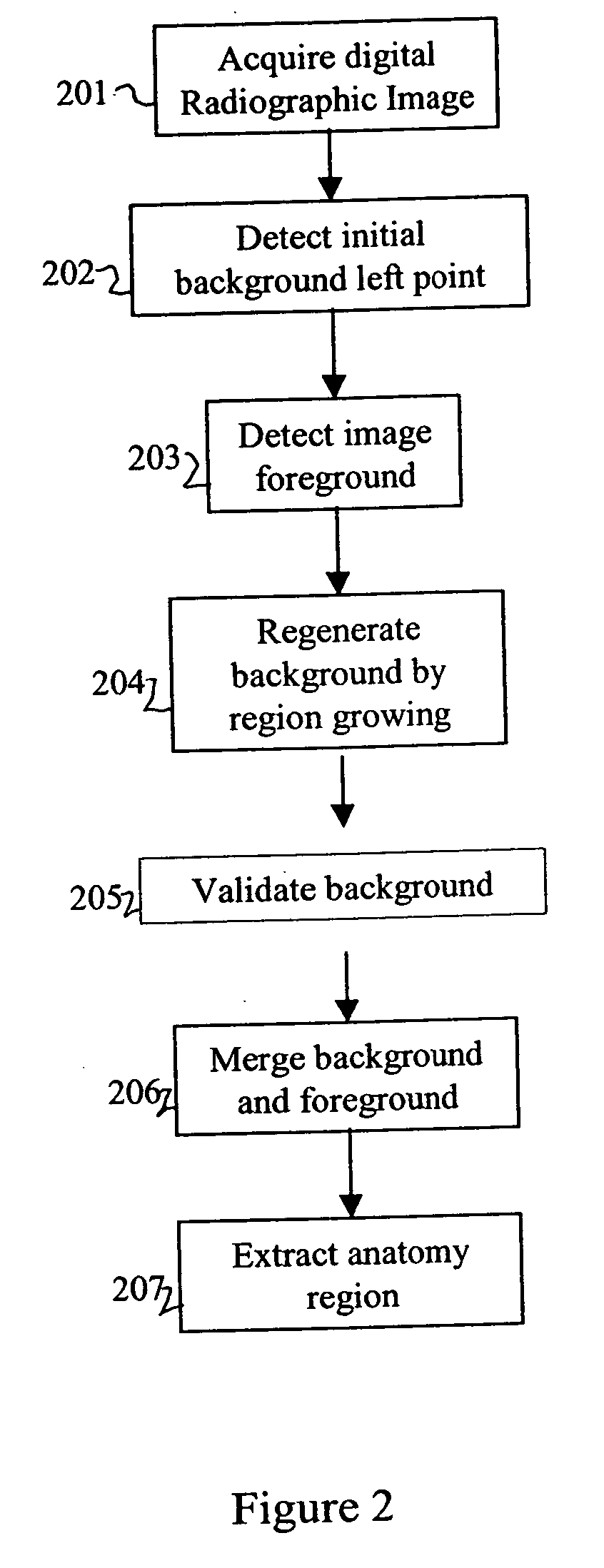Method of segmenting a radiographic image into diagnostically relevant and diagnostically irrelevant regions
a radiographic image and segmentation technology, applied in image enhancement, medical/anatomical pattern recognition, instruments, etc., can solve the problems of not working well, method cannot deal with single-exposure radiographs, and cannot be used to completely segment diagnostically relevant regions
- Summary
- Abstract
- Description
- Claims
- Application Information
AI Technical Summary
Benefits of technology
Problems solved by technology
Method used
Image
Examples
Embodiment Construction
Referring now FIG. 2, an embodiment of the present invention will be described.
A digital radiographic (medical) image is acquired (box 201) such as from a diagnostic imaging device (MRI, CT, PET, US), from a direct digital or computed radiography device, from an x-ray film digitizer, from a medical image archive. The digital medical image includes an array or matrix of rows (lines) and columns of pixels having a gray scale range of a predetermined range of bits or code values (e.g., 8 or 12 bits). The digital medical image is processed in an image processor, such as a digital computer and output to a display or hard copy. The method of the invention is carried out in the image processor.
This invention first tries to improve the background detection algorithm disclosed in U.S. Pat. No. 5,606,587, issued Feb. 25, 1997, inventors Barksi et al., by making it exam-type independent and at the same time to provide a reasonable initial background left point (box 202) for the acquired d...
PUM
 Login to View More
Login to View More Abstract
Description
Claims
Application Information
 Login to View More
Login to View More - R&D
- Intellectual Property
- Life Sciences
- Materials
- Tech Scout
- Unparalleled Data Quality
- Higher Quality Content
- 60% Fewer Hallucinations
Browse by: Latest US Patents, China's latest patents, Technical Efficacy Thesaurus, Application Domain, Technology Topic, Popular Technical Reports.
© 2025 PatSnap. All rights reserved.Legal|Privacy policy|Modern Slavery Act Transparency Statement|Sitemap|About US| Contact US: help@patsnap.com



